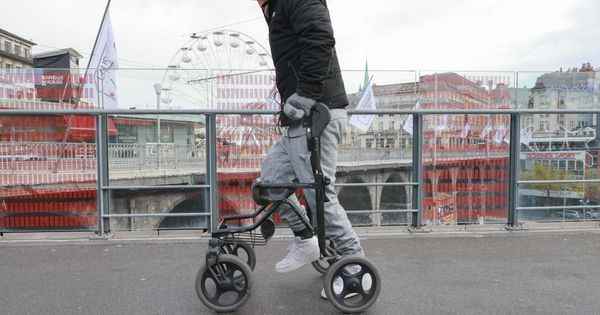Published ,
Reading 2 mins.
It seems like the realm of the impossible and yet: thanks to science, three paraplegics have been able to walk again, independently. Results published in the scientific journal Nature Medicine.
These three patients could no longer move their legs, not even feel them. They are now able to walk again thanks to an implant that electrically stimulates their spinal cord. A possibility that can be generalized to other patients in the future, the scientists hope.
First in Switzerland
It is indeed in our Swiss neighbors that a team led by Grégoire Courtine and Jocelyne Bloch, respectively neuroscientist at the Federal Polytechnic School of Lausanne (EPFL) and neurosurgeon at the Center hospitalier universitaire vaudois (CHUV), that the feat was carried out. The team succeeded in getting three patients back to walking. The latter, suffering from lesions affecting their spinal cord and therefore unable to move their legs or even feel them, were able to walk but also swim, cycle, stand and control their trunk.
16 implanted electrodes
How is this feat possible? The scientists implanted 16 electrodes behind the spinal cord of the three patients. These in contact with the meninges, send electrical impulses on demand to make the muscles contract. “Do not imagine an immediate miracle (but) it allows you to practice your activities right away” explained Grégoire Courtine during a press conference. The operated patients were able to take their first steps almost immediately this time, even if they were taken on a treadmill in the laboratory and had nothing to do with normal walking.
One kilometer walk
After five months of rehabilitation, significant progress was made: one of the patients was able to walk almost a kilometer without interruption. To improve their results, the researchers worked on the technology used. After ten years of work, it is finally the culmination of this technique which has given its first results.
Indeed, it had been experienced in 2011 for the first time and the implanted patient, spinal cord injury and paraplegic, was able to stand. This time, “the electrodes are longer and larger than those used before, allowing access to more muscles”detailed Jocelyne Bloch.
Accessible in a few years?
Can this type of technology be considered for the greatest number? And if so when? “Hopefully in a few years.” , believes Jocelyne Bloch. The technique still needs to be refined and must undergo larger clinical trials, to be triggered using a mobile phone, to facilitate its use. For Gérard Courtine, the goal “is to make it a therapy for everyone, available to everyone”.
